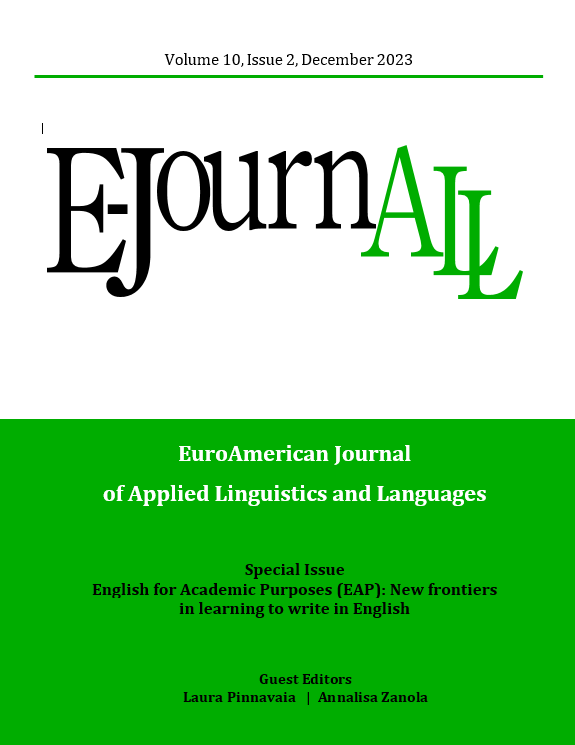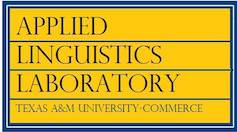The use of travel narratives to foster intercultural sensitivity and language awareness in the EAP classroom: the case of A House in Sicily by Daphne Phelps and its Italian translation Una Casa in Sicilia.
DOI:
https://doi.org/10.21283/2376905X.1.10.2.2758Keywords:
travel, writing, translation, Phelps, EAPAbstract
This study argues for the use of English travel narratives and their interlingual translations as vehicles to foster intercultural sensitivity and language awareness in the EAP classroom. Both travel writing and interlingual translation have been, in fact, successfully used in academic environments as shown by an increasing scholarly interest over the past decades. Moreover, the relationship between travel and language can be explored, in Cronin’s words, “in the context of a nomadic theory of translation” where “the translating agent like the traveller straddles the borderline between the cultures” (Cronin, 2000, p. 2). In light of these considerations, this study performs a comparative analysis of Daphne Phelps’s British travel narrative A House in Sicily (1999) and its Italian translation Una casa in Sicilia (2001) to show how travel writing (also in translation) may be an excellent opportunity for a reappraisal of what literature may have to offer in the EAP context.
References
Bassnett, Susan (2019). Translation and travel writing. In Nandini Das & Tim Youngs (Eds.), The Cambridge History of Travel Writing (pp. 550-564). Cambridge University Press.
Bhabha, Homi K. (1994). The location of culture. Routledge.
Baxter, Jacqueline (2016). School governance: policy, politics and practices. Policy Press.
Bayyurt, Yasemin, & Akcan, Sumru (Eds.). (2015). Current perspectives on pedagogy for English as a Lingua Franca. De Gruyter.
Beaven, Ana, & Borghetti, Claudia (2014). Mobility is not a value in itself: Intercultural education resources for mobile students. European Association for International Education Blog. May 2014. https://www. eaie.org/blog/Erasmus-mobility/
Bell, Douglas E. (2022). Methodology in EAP: Why is it largely still an overlooked issue? Journal of English for Academic Purposes, 55(1), [101073]. https://doi.org/10.1016/j.jeap.2021.101073
Berman, Antoine (2000). Translation and the Trials of the Foreign, translated by Lawrence Venuti. In Lawrence Venuti, (Ed.). The Translation Studies Reader (pp. 284–297). Routledge.
Buden, Boris, Nowotny, Stefan, Simon, Sherry, Bery, Ashok, & Cronin, Michael (2009). Cultural translation: An introduction to the problem, and Responses. Translation Studies2(2), 196-219. https://doi.org/10.1080/14781700902937730
Burgin, Robert (2013). Going places. a reader’s guide to travel narratives. Libraries Unlimited.
Byram, Michael, & Feng, Anwei (2006). Living and studying abroad: research and practice. Multilingual Matters.
Carr, David (2004). Many kinds of crafted truths: an introduction to nonfiction. In Robert Burgin (Ed.), Nonfiction Readers’ Advisory (pp. 47-65). Libraries Unlimited.
Cronin, Michael (2000). Across the lines: Travel, Language, Translation. Cork University Press.
Culbert, John (2018). Theory and the Limits of Travel. Studies in Travel Writing 22(4), 343–352. https://doi.org/10.1080/13645145.2019.1624072
Flowerdew, John, & Peacock, Matthew (2001). Issues in EAP: A preliminary perspective. In John Flowerdew & Matthew Peacock (Eds.), Research perspectives on English for academic purposes (pp. 8-24). Cambridge University Press.
Fois, Eleonora (2021). Translator training, English language teaching and corpora: Scenarios and applications. International Journal of Language Studies 15 (4), 59-78.
Frydrychova, Klimova B. (2012). Changes in the notion of academic writing. Procedia - Social and Behavioral Sciences 47, 311 – 315. https://doi.org/10.1016/j.sbspro.2012.06.656
Gillespie, Paula, & Neal, Lerner (2008). The Longman Guide to Peer Tutoring. Pearson.
Giuffrida, Simona A. (2016). The Potential of Travel Writing for Developing Intercultural Communicative Competence in the FL Classroom. International Journal of Language and Applied Linguistics 2 (Special Issue: Intercultural and the 21st Century School), 34-76.
Gonzalez, Valentina, & Miller, Melinda (2020). Reading, writing with English learners. Seidlitz.
Grabe, William (2003). Reading and writing relations. In Barbara Kroll (Ed.), Exploring the dynamics of second language. Cambridge University Press.
Guardado, Martin, & Light, Justine (Eds.). (2020). Curriculum development in English for Academic Purposes. Palgrave.
Hafner, Christoph A., & Miller, Lindsay (2019). English in the disciplines. A multidimensional model for ESP course design. Routledge.
Holliday, Adrian (1999). Small cultures. Applied Linguistics 20(2), 237-264. https//doi.org/10.1093/applin/20.2.237
Hyland, Ken (2004). Genre and second language writing. The University of Michigan Press.
Hyland, Ken (2006). The ‘Other’ English: Thoughts on EAP and Academic Writing. The European English Messenger 15(2), 34-38.
Hyland, Ken, & Wong, Lillian L. C. (Eds.). (2019). Specialised English. New directions in ESP and EAP research and practice. Routledge.
Jiménez, Santiago Henríquez (2001). The benefits of travel: exploring the notion of genre and academic assimilation of travel literature. CEA Critic, 64(1), 85–92. http://www.jstor.org/stable/44378333
Jordan, Robert R. (1997). English for Academic Purposes. A guide and resource book for teachers. Cambridge University Press.
Kramsch, Claire (2009). Third culture and language education. In Vivian Cook, & Li Wei (Eds.), Contemporary applied linguistics. language teaching and learning (pp. 233-254). Continuum.
Leonardi, Vanessa (2009). Teaching Business English through translation. Journal of Language & Translation 10(1), 139-153. https:// doi:10.22425/jul.2009.10.1.139
Lewis, Philip E. (2000). The measure of translation effects. In Lawrence Venuti, (Ed.), The translation studies reader (220-239). Routledge.
Martin Alison E., & Susan Pickford (Eds.). (2012). Travel narratives in translation, 1750-1830. Routledge.
Mažeikienė, Viktorija (2019). Translation as a method in teaching ESP: an inductive thematic analysis of literature. Journal of Teaching English for Specific and Academic Purposes, January 2019, pp. 513-523. https://espeap.junis.ni.ac.rs/index.php/espeap/article/view/765/414
Mastellotto, Lynn A. (2013). Relocation narratives 'Made in Italy': self and place in late-twentieth century travel writing. Doctoral thesis, University of East Anglia. https://ueaeprints.uea.ac.uk/id/eprint/48809
Ostbye, Liv Ingrid (1997). ESP in medical Science: a multidimensional approach to syllabus design. In Jordi Piqué, & Viera, David J. (Eds.), applied languages: theory and practice in ESP (pp. 93-106). Universitat de València.
Perkins, Kyle, & Jiang, Xuan (2020). A proposed literature-based syllabus for EAP writing. Journal of Global Education and Research 4(1), 48-61. https://www.doi.org/10.5038/2577-509X.4.1.1103
Phelps, Daphne (1999). A house in Sicily. Virago.
Phelps, Daphne (2001). Una casa in Sicilia. Neri Pozza. Translated by Anna Lovisolo.
Richards, Jack Croft, Platt, John, & Platt, Heidi (1992). Dictionary of language teaching and applied linguistics. Longman Publishing Group.
Robinson, Pauline (1991). ESP today: A practitioner's guide. Prentice Hall.
Ross, Silvia (2009). Home and away: Tuscan abodes and Italian Others in contemporary travel writing. Studies in Travel Writing 13, 45-60. https://doi.org/10.1080/13645140802611333
Stoller, Federica L. (2001). The curriculum renewal process in English for academic purposes programmes. In John Flowerdew & Matthew Peacock (Eds.), Perspectives on English for Academic Purposes (pp. 208-224). Cambridge University Press.
Strickland, Dorothy S., & Mandel Morrow, Lesley (Eds.). (2000). Beginning reading and writing. Teachers College Press.
Swales, John (1981). Aspects of article introductions. Language Studies Unit. https://doi.org/10.3998/mpub.3985899
Tatzl, Dietmar (2020). Functions of literature in teaching English for Specific Purposes. Innovation in language learning. International Conference. https://conference.pixel-online.net/library_scheda.php?id_abs=4944
Venuti, Lawrence (1995). The translator's invisibility: a history of translation. Routledge.
Venuti, Lawrence (1998). The scandals of translation: Towards an ethics of difference. Taylor & Francis Ltd.
Victoria, Mabel, & Sangiamchit, Chittima (2021). Introduction: interculturality and the English classroom. In Mabel Victoria, & Chittima Sangiamchit (Eds.), Interculturality and the English classroom (pp. 1-26). Palgrave.
Wright, Wayne. E. (2015). Foundations for teaching English language learners: Research, theory, policy, and practice. Caslon.
Wu, Shang (2021). Writing travel as Janus: cultural translation as descriptive category for travel Writing. Interlitteraria 2021, 26(2): 403–418. http://dx.doi.org/10.12697/IL.2021.26.2.6
Zaghar, Fatma (2016). Interculturality in ESP classrooms: a contributing strategy to meet the job-market expectations. Arab World English Journal (AWEJ) 7(4), 503-512, https://www.doi.org/10.31235/osf.io/qjcq5
Downloads
Published
How to Cite
Issue
Section
Categories
License
Copyright (c) 2023 Annalisa Bonomo, Simona Agata Giuffrida

This work is licensed under a Creative Commons Attribution 4.0 International License.


